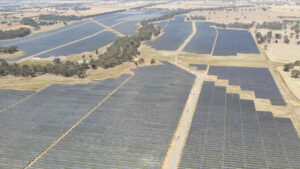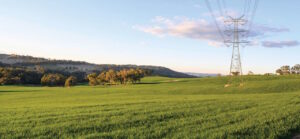A new report from the Floating Wind Joint Industry Project has concluded that 70GW of floating wind capacity will be installed globally by 2040.
The Floating Wind Joint Industry Project – Phase II summary report was published this week by the Carbon Trust, providing an analysis of the floating offshore wind sector and details market growth projections and technology challenges.
Currently, only 73MW of floating wind capacity has been installed globally, and even this is not recent, with the report identifying that “there has been a relatively low level of new capacity installed since 2018.”
However, given a confluence of forces pushing for increased renewable energy capacity, a decreasing technological and development cost for offshore wind, and concerns over offshore wind farms being visible from the coast or tourist destinations, floating offshore wind is becoming more attractive as a future source of renewable energy.
This is lucky, as floating offshore wind also promises to deliver environmental benefits such as stronger and more consistent wind speeds the further out from the coastline you go.
Traditional seafloor-based offshore wind turbines are economically unfeasible that far out from the coast, in sea depths in excess of 100 metres. As such, floating offshore wind turbines – which are installed on floating pontoons and tethered to the seafloor – will soon come into their own.
Unsurprisingly, then, according to the new report, floating wind capacity is expected to increase to 10.7GW by 2030 and to 70GW by 2040, with as much as 3GW being installed annually between 2030 and 2040.
 “I am sure that floating offshore wind will play a crucial role in our future renewables generation, and in helping us achieve a green recovery following the Covid-19 pandemic,” said Scotland’s energy minister, Paul Wheelhouse.
“I am sure that floating offshore wind will play a crucial role in our future renewables generation, and in helping us achieve a green recovery following the Covid-19 pandemic,” said Scotland’s energy minister, Paul Wheelhouse.
“The Scottish government is committed to supporting research and development that will help address challenges associated with helping achieve commercial-scale deployment of floating offshore wind, and is supporting innovation in the sector through our funding of the Floating Wind Joint Industry Project.
“The findings of this report from Phase II of the project are very much welcomed,” Wheelhouse added. “It is particularly encouraging to see the significant growth projected for the floating offshore wind industry in the coming decades and we are keen to explore early opportunities associated with the ScotWind leasing round of Crown Estate Scotland, the electrification of production platforms in the oil and gas sector and for production of ‘green hydrogen’ for use in transport, heating and industry.
“The development of floating wind offers a massive opportunity for sustainable growth of the Scottish economy while realising our net-zero ambitions.”
The report outlines the work done as part of the Floating Wind Joint Industry Project, “a collaborative research and development initiative that aims to investigate the challenges and opportunities for the deployment of large-scale commercial floating wind farms.”
In addition to the market projections supplied by Carbon Trust, the report includes analysis across four main technology areas being faced by the industry: turbine requirements and foundations scaling, heavy lift offshore operations, dynamic export cables, and monitoring and inspection. Each of the four reports addressing the main technology challenges were written by external technical contractors.
“This report marks the culmination of over a years’ work through the Floating Wind JIP and it is clear that floating wind offers technology and supply chain investment opportunities,” said Dan Kyle Spearman, manager of the Floating Wind JIP, the Carbon Trust.
“We expect that it will become a key sector for low carbon power generation and economic growth in geographies where deeper waters do not allow for bottom-fixed offshore wind turbines. The time is now for the floating wind industry to look to pre-commercial and commercial projects to deliver the cost reduction necessary for the sector to compete with other renewable energy options.”
The study on next-generation turbine requirements was delivered by Danish engineering group Ramboll and found that only minor modifications would likely be necessary for future turbines. Further, Ramboll found that the required relative primary steel, secondary steel, and mooring mass would actually decrease as turbines got larger.
The heavy-lift operations portion of the report was delivered by Seaway 7 and investigated the challenges associated with floating heavy lift offshore construction and maintenance of operations for turbines with nameplate capacity of up to 20MW.
Unlike turbine requirements, the analysis found that there is at the moment “limited availability and high cost of suitable floating heavy lift vessels in the market” and that this presents “a barrier to cost-effectively undertaking operations offshore.”
Essex-based BPP Cable Solutions address the investigated the challenges and assisted in the development of high voltage dynamic export cables required to transport power from floating offshore wind farms.
Previous Floating Wind JIP studies have found that there is a lack of suitable dynamic cables currently available on the market, and in April 2019 a competition was launched to support cable manufacturers as they develop and test suitable designs. Currently, therefore, there are five cable manufacturers being supported by the Floating Wind JIP to make these designs available as products for future projects.
Finally, Texas-based Oceaneering International concluded that there is no “quick win” solutions for floating monitoring and inspection techniques, concluding “that improvement is needed in both the collection of data and its usage to inform and manage asset integrity for floating wind farms, and in particular for subsea assets.”










